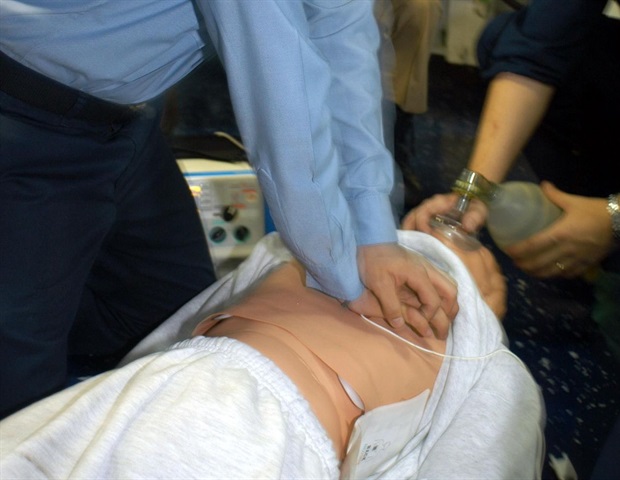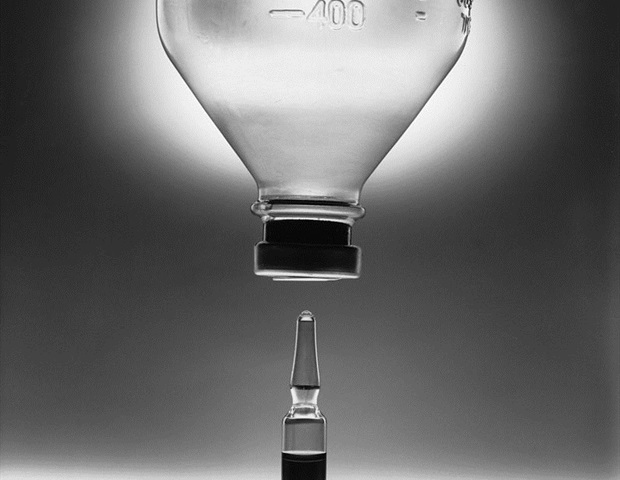In a recent Journal of Allergy and Clinical Immunology study, researchers investigate the role of extracellular vesicles (EVs) in the innate nasal mucosal response to several respiratory viruses.

Study: Cold exposure impairs extracellular vesicle swarm-mediated nasal antiviral immunity. Image Credit: Andrey_Popov / Shutterstock.com
Respiratory infections and the nasal mucosa
Upper respiratory tract infections (URIs) are often characterized by inflammation and/or irritation of the sinuses, ear infections, bronchiolitis, pneumonia, and worsening asthma or chronic obstructive pulmonary disease (COPD) symptoms. There are several factors that may increase the severity of URIs, some of which include age, sex, the presence of comorbidities, as well as environmental conditions.
Previous research has reported that many of the viruses responsible for URIs primarily infect the nasal cavity due to the low temperature within this location as compared to other parts of the body. Nasal mucosa within this cavity is comprised of mucus glycoproteins, the mucociliary escalator, and epithelial tight junctions that collectively form a barrier against inhaled pathogens.
The release of antimicrobial EVs by nasal epithelial cells appears to have a crucial role in the host mucosal immune response. These lipid-bound vesicles can carry a wide range of substances including nucleic acids, proteins, lipids, amino acids, and metabolites, depending upon the origin of the EV.
When responding to a viral infection, EVs may carry antiviral agents such as microRNAs (miRNAs) that either directly act as antivirals or regulate inflammatory pathways to enhance the immune response. In addition to this role as delivery vehicles, EVs may also exert direct antiviral effects by binding to viral ligands through surface receptors to inhibit the entry of these viruses into host cells.
Viral infection leads to release of EVs in nasal epithelial cells
Toll-like receptors (TLRs) are transmembrane receptors that are expressed in various cell types, including nasal epithelial cells. Here, TLRs recognize certain components of pathogens attempting to enter the nasal cavity and subsequently initiate both immune and inflammatory responses to limit the infection potential of these infectious agents.
The TLR3 agonist polyinosinic polycytidylic acid (poly[I:C]) was used to resemble the immune response to ribonucleic acid (RNA) viral infections. To this end, poly(I:C) was found to promote the secretion of EVs from isolated nasal epithelial cells, with a peak effect of 1.6-fold observed at 24 hours.
Despite stimulation by poly(I:C), the incubation of nasal epithelial cells at a low temperature of 4°C led to a significant reduction of EV uptake by 87.5%. This was comparable to incubation at 37°C for 60 minutes, during which EV uptake was rapid and profuse throughout the cytoplasm.
How do nasal EVs inhibit respiratory viruses?
The researchers then infected primary human nasal epithelial cells with three different respiratory viruses including CoV_OC43, minor group rhinovirus RV-1B, as well as major group rhinovirus RV-16. Following infection, exposure to TLR3-simulated EVs significantly reduced intracellular virus messenger RNA (mRNA) levels, thus indicating that the EVs effectively inhibited viral replication.
This antiviral activity was dose-dependent and led to 38.37%, 72.59%, and 61.51% inhibition of CoV-OC43, RV-1B, and RV-16 replication, respectively. This effect was not replicated when unstimulated EVs were exposed to infected cells.
Further analysis into the mechanisms responsible for the antiviral effects of stimulated EVs indicated that the expression of miR-17, which is one type of miRNA that has previously been implicated in reducing viral replication during URIs, was significantly greater in EVs stimulated by TLR3 as compared to unstimulated EVs. The transfection of miR-17 into human nasal epithelial cells effectively inhibited viral RNA replication, thus confirming the important antiviral role of miR-17 against respiratory viruses.
Does temperature impact EV function in the nasal cavity?
When external temperatures drop from 23.3 °C to 4.4°C, the intranasal temperature at the anterior and midinferior turbinate similarly drops to 6.4 °C and 4.7 °C, respectively. To replicate these ambient temperature changes in vitro, the researchers reduced the cell culture temperature to 32 °C, as compared to the conventional 37 °C environment.
This temperature reduction led to significant impairments in the secretion of EVs following TLR3 simulation. Inevitably, the antiviral effects of TLR3-simulated EVs against viral infection were also significantly altered. At 32 °C, the expression of miR-17 in EVs was also significantly reduced.
Study takeaways
URIs are most frequently transmitted during the winter months, with common respiratory viruses such as the common cold and severe acute respiratory syndrome coronavirus 2 (SARS-CoV-2) often responsible for an increase in cases during the winter. In addition to the impact of different human behaviors during the winter, such as the transition from outdoor activities to indoors, the reduction in ambient temperature also appears to impact the efficiency of the immune response against URIs, with specific effects on the antiviral activity of EVs.
Taken together, the current study provided important insights into the role of cold ambient temperature in the immune response to respiratory pathogens. Furthermore, the discovery of EV-mediated antiviral immunity within the nasal epithelium supports the potential therapeutic application of EVs with antiviral agents for treating URIs in the future.
Journal reference:
- Huang, D., Taja, M. S., Nocera, A. L., et al. (2022). Cold exposure impairs extracellular vesicle swarm-mediated nasal antiviral immunity. The Journal of Allergy and Clinical Immunology. doi:10.1016/j.jaci.2022.09.037.






%2c_3D_illustration._A_virus_transmitted_by_mosquito_and_caus_-_Kateryna_Kon_M1_cd7c644c9e204869b1de65dd2f361793-620x480.jpg)
